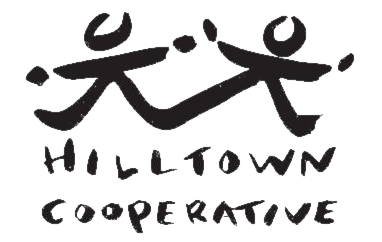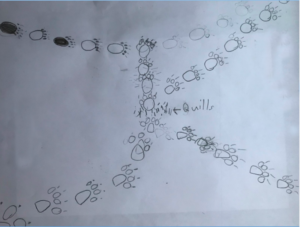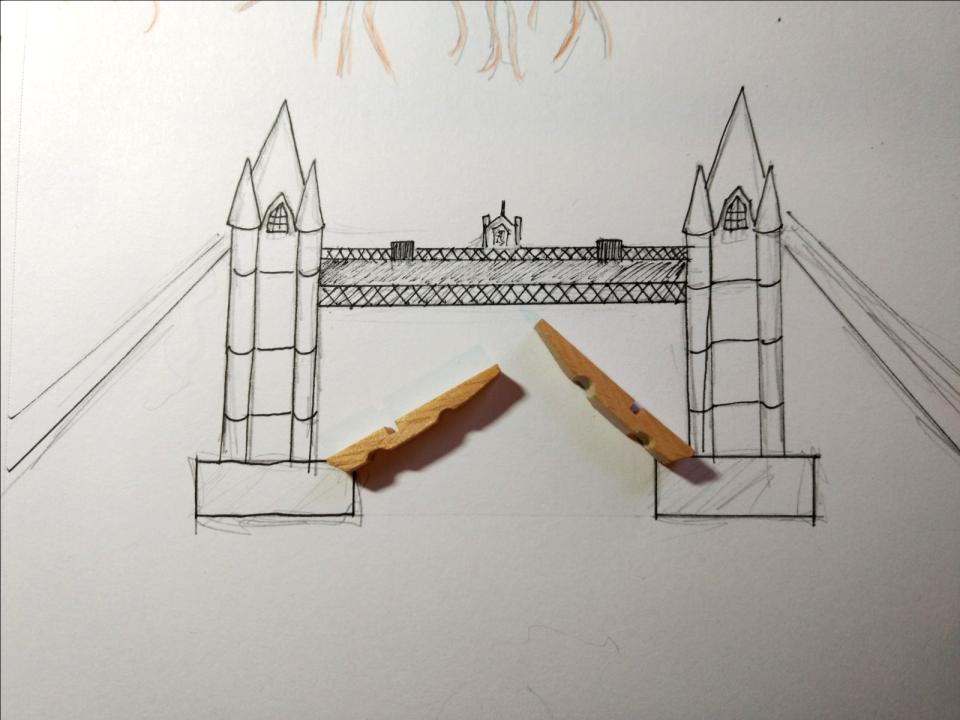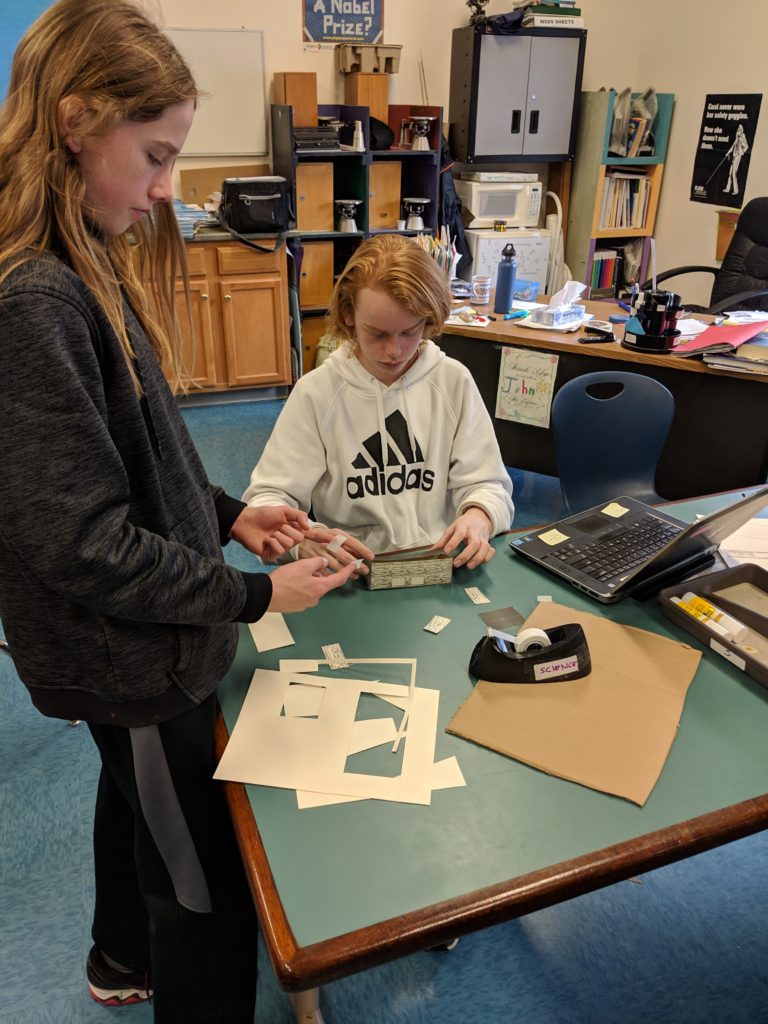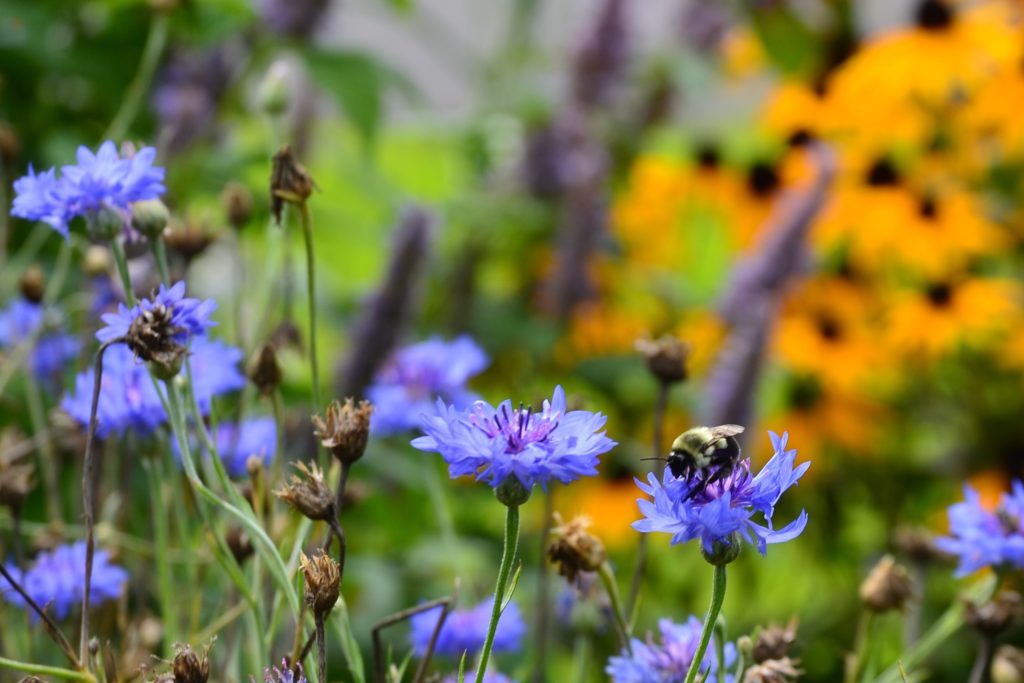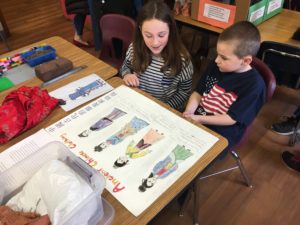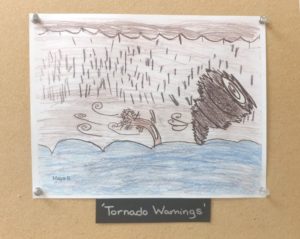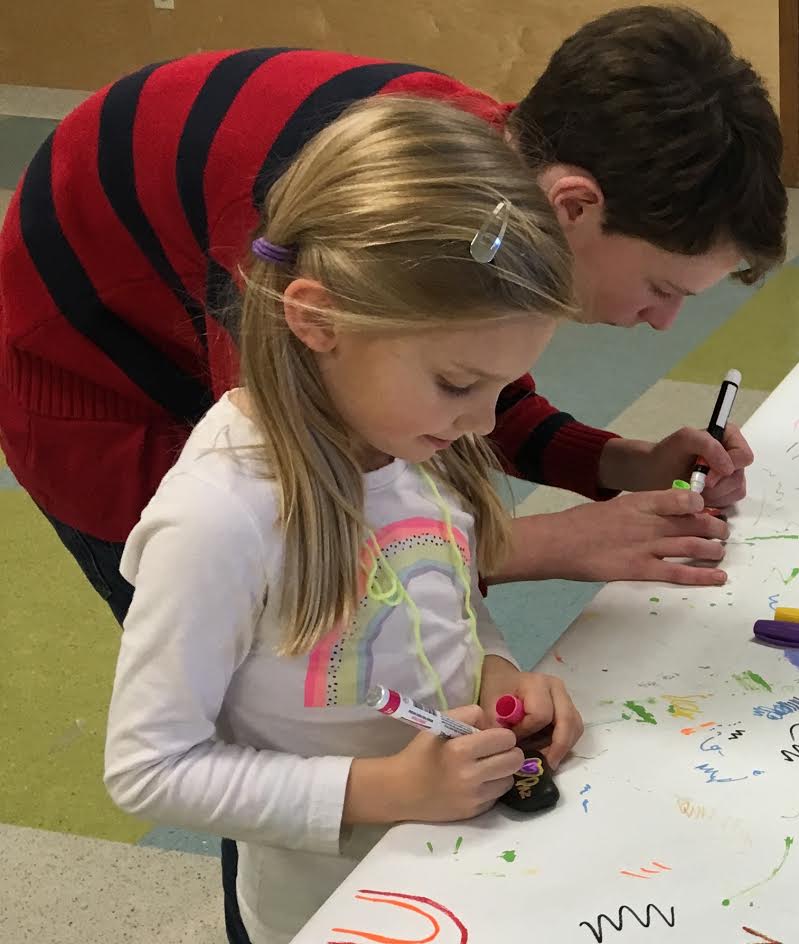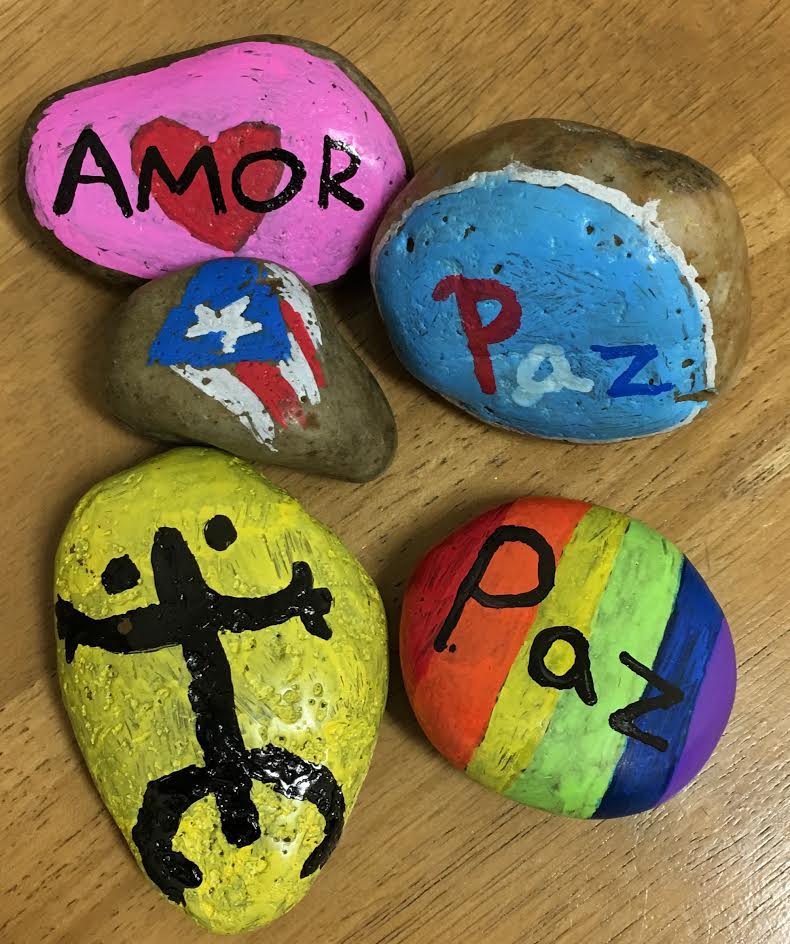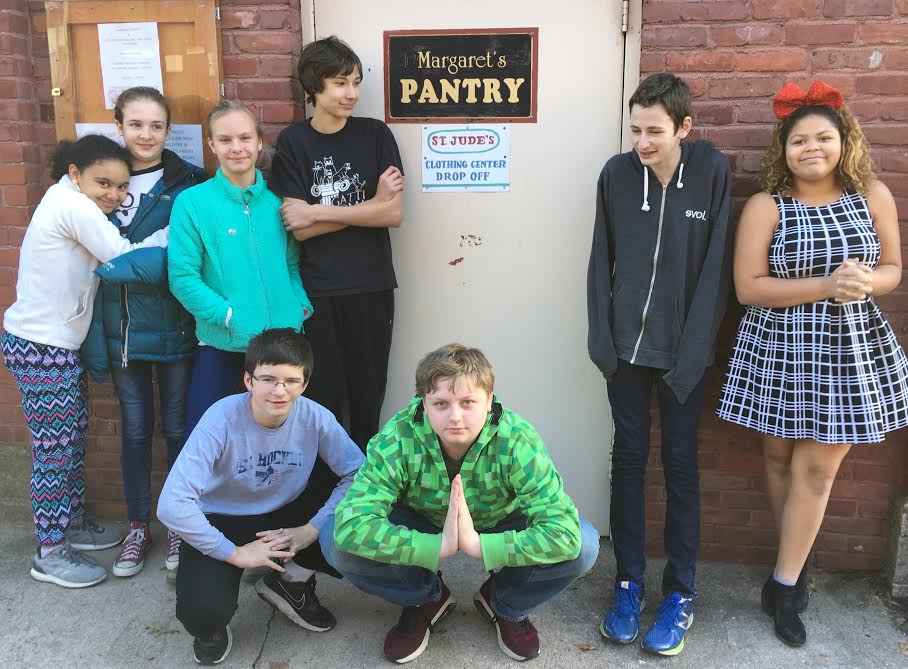Featured studies:
- October 2017 – Prisms Colonial Tavern Roleplay
- January 2018 – CSL Supporting Global Community After Hurricane Maria
- February 2018 – Greens & Yellows Weather Study
- March 2018 – Reds & Oranges Ancient China Study
- May 2018 – Compassion in Action
- August 2018 – Hilltown Pollinator Garden
- September 2018 – Watching Monarch Butterflies Transform
- April 2019 – Energy Efficient Engineering and Design
- October 2019 – The Water Cycle
- June 2020 – Eighth Grade Projects
- December 2020 – Artists Reimagining Objects
- January 2021 – Mill-Inspired Collages
- March 2021 – Animal Track Stories
- May 2021 – Land Art
- January 2023 – Celebrating Black Activists
Celebrating Black Activists
As part of our work thinking about the legacy of Dr. Martin Luther King, Jr. around his birthday and looking ahead to Black History Month, the Prisms have developed a whole range of exciting biography posters celebrating a variety of Black American activists, many of whom are still working today.
K-5 Land Art
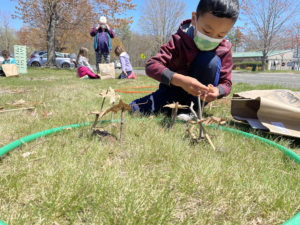
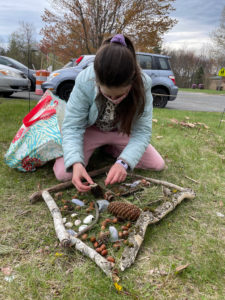
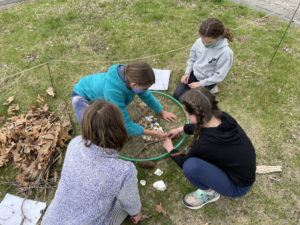
Animal Track Stories
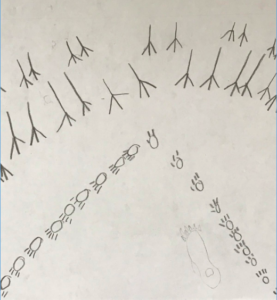 This winter has been great for tracking. The Greens have been learning about animal tracks and writing track stories to go with them! First, we looked at animal tracks left around the school, and talked about the stories they tell. Track stories are stories left in the snow by animals. They can tell us many things if we read them closely. They can tell us what animals were in the neighborhood and what they were doing. Then, the Greens used their knowledge of tracks and created track stories of their own.
This winter has been great for tracking. The Greens have been learning about animal tracks and writing track stories to go with them! First, we looked at animal tracks left around the school, and talked about the stories they tell. Track stories are stories left in the snow by animals. They can tell us many things if we read them closely. They can tell us what animals were in the neighborhood and what they were doing. Then, the Greens used their knowledge of tracks and created track stories of their own.Mill-Inspired Collages
The students in the 4th and 5th grade at Hilltown have been studying immigration and the role immigrants played in working in the mills in our local area in the last century.In the Atelier we considered the actual mill building and its structure as a springboard to launch an art project. We noticed that on the outside, most mill buildings had repeating structural elements. Floors, or levels, were stacked one over another and built with consistent spacing. Windows were predictably and evenly spaced. We began our project by cutting strips of dark paper. We used these to create the horizontal and vertical elements of a building’s structure. They were then challenged to play around with the strips and to think of them as visual elements in a collaged composition that contained artistic expression while retaining the feeling and essence of a mill building’s structure.
Artists Reimagining Objects
As the first assignment in the Atelier this school year, students in both the Purples and the Prisms were challenged to reconsider familiar objects in new and sometimes very unexpected ways. Students were directed to collect about 5 small household objects and then imagine their potential as something else.
As part of their process, students first viewed a slideshow with numerous examples of creative endeavors in which artists included found objects. Then, students were told to look at their selected objects and imagine them other than what they actually were. Next, they drafted ‘art doodles’ in which they altered the perception of their object with just a few lines. Finally, students illustrated fully developed drawings which physically incorporated actual objects reimagined as something else.
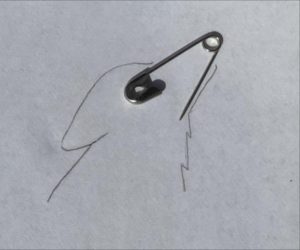
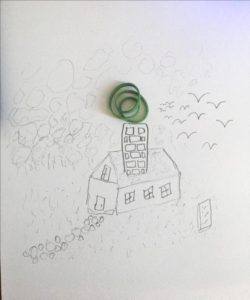
Eighth Grade Projects
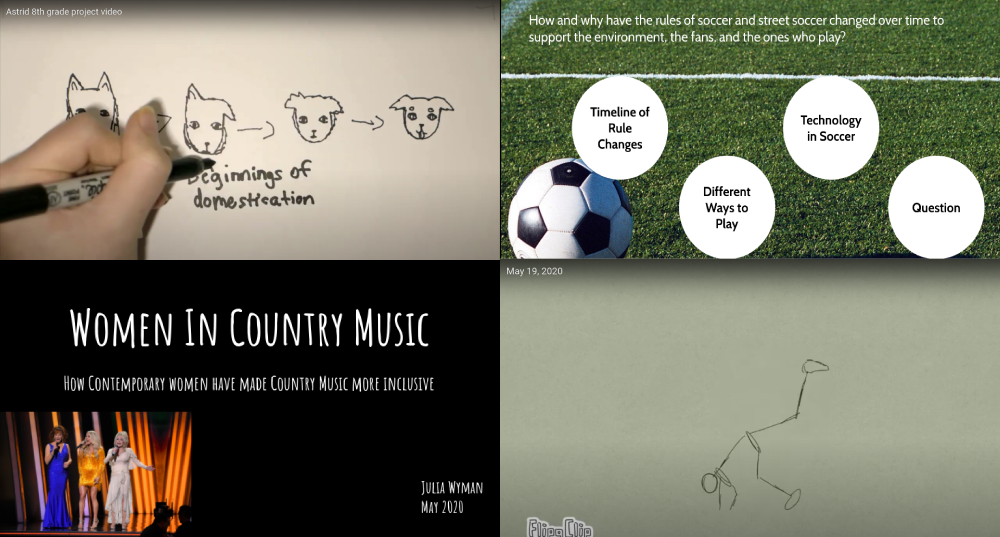 The Eighth Grade Project is a requirement for graduation and is a rite of passage for the eighth graders. Students show their passion and skills in a scholarly way as they move toward high school. It is a time for students to delve deeply into a topic of their choice and to prove to their community that they are ready for high school. This year, Hilltown eighth graders explored several digital platforms to present their work. Here a are a few projects and presentations from this year:
The Eighth Grade Project is a requirement for graduation and is a rite of passage for the eighth graders. Students show their passion and skills in a scholarly way as they move toward high school. It is a time for students to delve deeply into a topic of their choice and to prove to their community that they are ready for high school. This year, Hilltown eighth graders explored several digital platforms to present their work. Here a are a few projects and presentations from this year:
- Willa Remick, “Rotoscoping: The science you’ve seen but never knew”
- Julia Wyman, “Women in Country Music: How Contemporary women have made Country Music more inclusive”
- Finn Norsen, “The Rules of Soccer and Street Soccer and How They Came To Be”
- Astrid Anderson, “The Wolf and the Lion: The Domestication of Cats and Dogs”
The Water Cycle
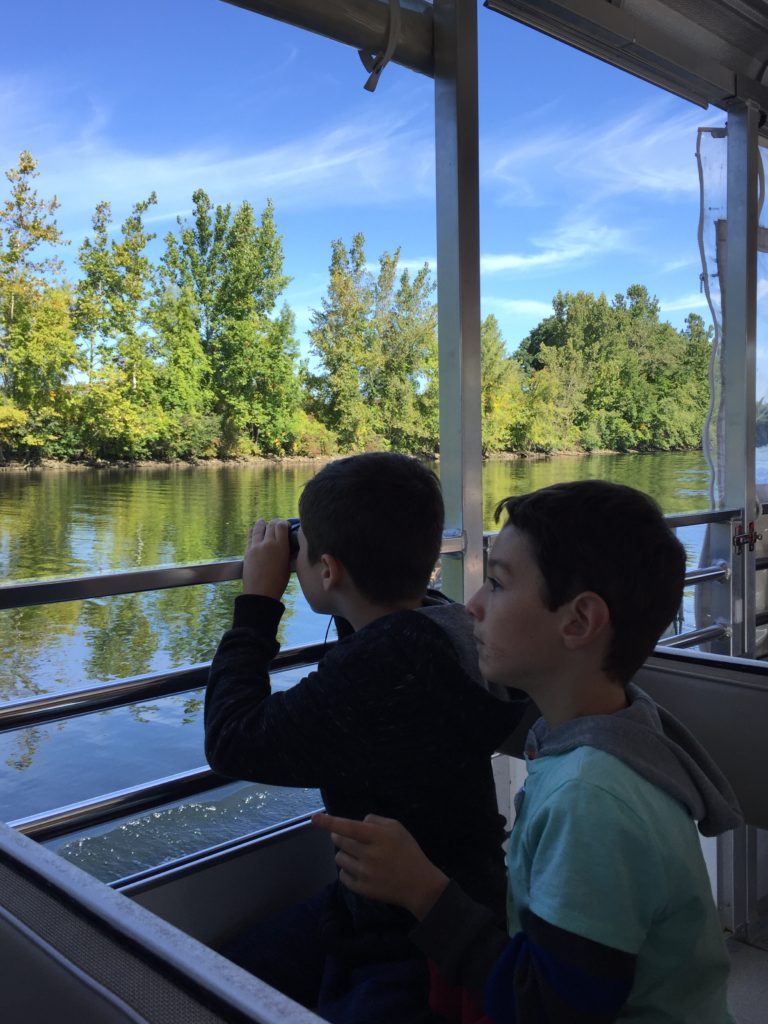
The Greens and Yellows have been very engaged in studying the water cycle. From conducting experiments about evaporation, condensation and precipitation, we acted out the incredible journey of how a water droplet might travel the earth through clouds, rivers and oceans or through plants, animals and soil… We were reminded that water changes its state from liquid, gas to solid, but it is still the same molecular structure. Basically, we drink the same water the dinosaurs drank! We have been exploring our own watershed. We visited Northfield Mountain’s museum depicting the cultural history of the Connecticut River. Then we rode a riverboat on the river and witnessed its natural beauties. We cruised by eagle nests, swans, and Great Blue Herons and circled the deepest part of the river, that is home to some rare species. Then we hiked up to the summit of Mt. Holyoke in Skinner Park to sketch the famous views of the oxbow from the Summit House porch.
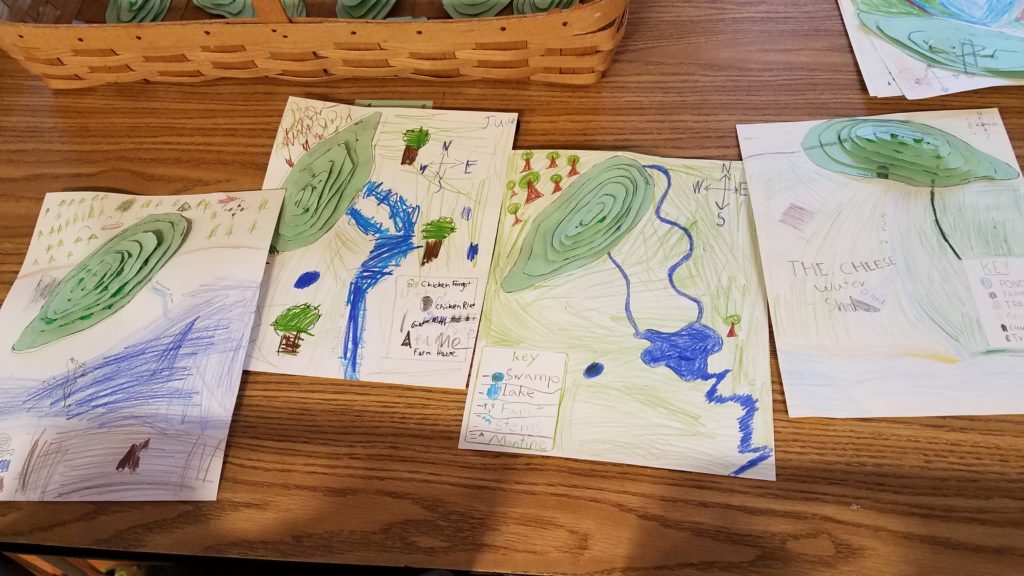
Energy Efficient Engineering and Design
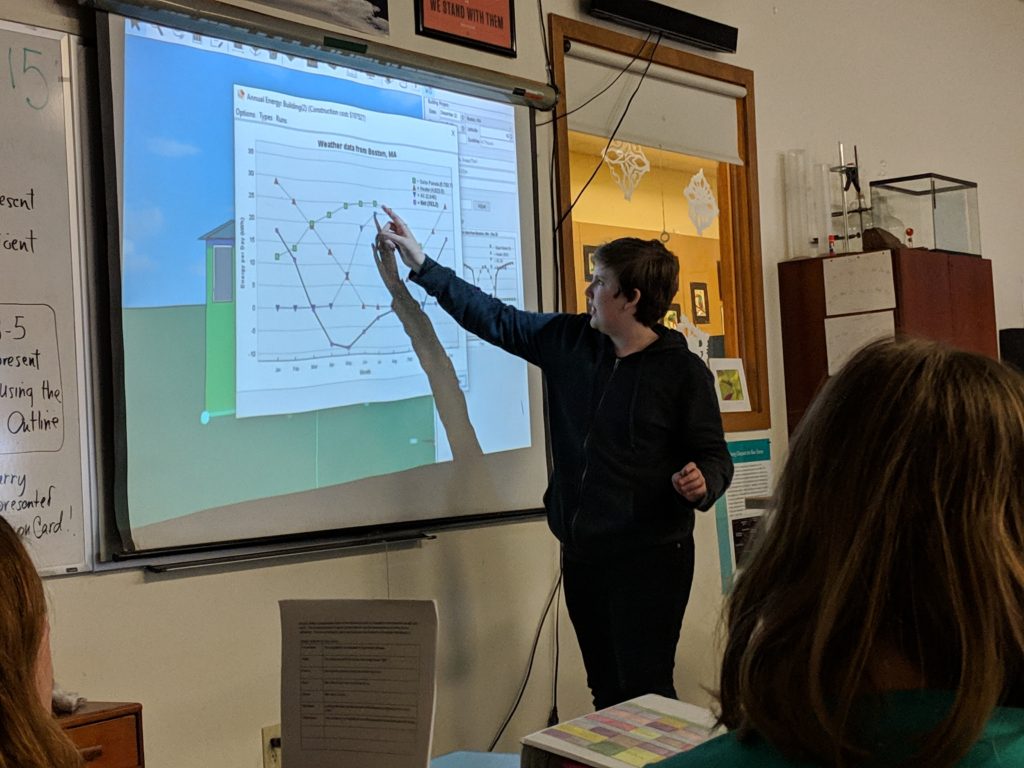 In January, Prisms’ students began to explore the question, What does it mean to have an energy efficient house? This question built on fall investigations of ecosystems, climate, physics of heat, and 7th & 8th grade math.
In January, Prisms’ students began to explore the question, What does it mean to have an energy efficient house? This question built on fall investigations of ecosystems, climate, physics of heat, and 7th & 8th grade math.
Students began the exploration by making individual “energy inventories” of how energy is used in their homes. Classes compared their own data collections with national and state data to understand how our personal energy consumption compares with state and national averages (our energy consumption is below average!). This led to learning about non-renewable and renewable energy sources, which led to a debate: is figuring out how to be energy efficient a way of discovering an energy source?
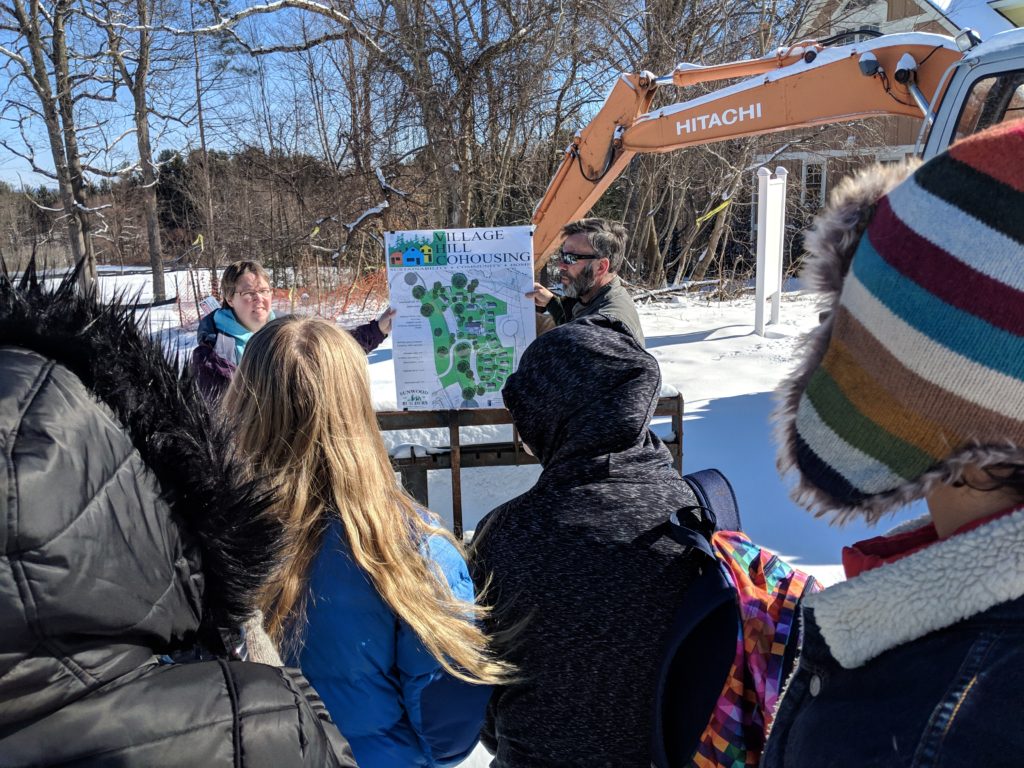 Students experimented with different materials, comparing their thermal capacity. Which materials could slowly absorb and then hold heat? Students tested sand, pea gravel, and shredded paper, graphed the results, and analyzed the data. Discoveries about thermal properties of various materials became applied knowledge in the next phase of the exploration.
Students experimented with different materials, comparing their thermal capacity. Which materials could slowly absorb and then hold heat? Students tested sand, pea gravel, and shredded paper, graphed the results, and analyzed the data. Discoveries about thermal properties of various materials became applied knowledge in the next phase of the exploration.
In the next phase of exploration , students began working in teams to use a software program (Energy 3D) to run a variety of energy analyses on home designs. Students played with the tools, sketched a variety of houses, and applied different materials and features. Everyone first got a chance to design whimsical structures and million dollar pads! Then they focused on designing for a specific client, working within a budget, and other real-world constraints and requirements.
In the middle of the design project, students visited Village Hill, a housing development under construction in Northampton. They talked with Sunwood Builders and Jonathan Wright of Wright Builders Inc. to learn about energy efficient considerations, actual budgets, requirements, constraints, and design solutions.
After running simulated energy tests on their computerized designs and resolving problems, students finalized their houses and translated them into 3D cardboard models made by hand. House designs, physical models, and energy specs were presented to panels of parents in a culminating showcase.
Watching Monarch Butterflies Transform
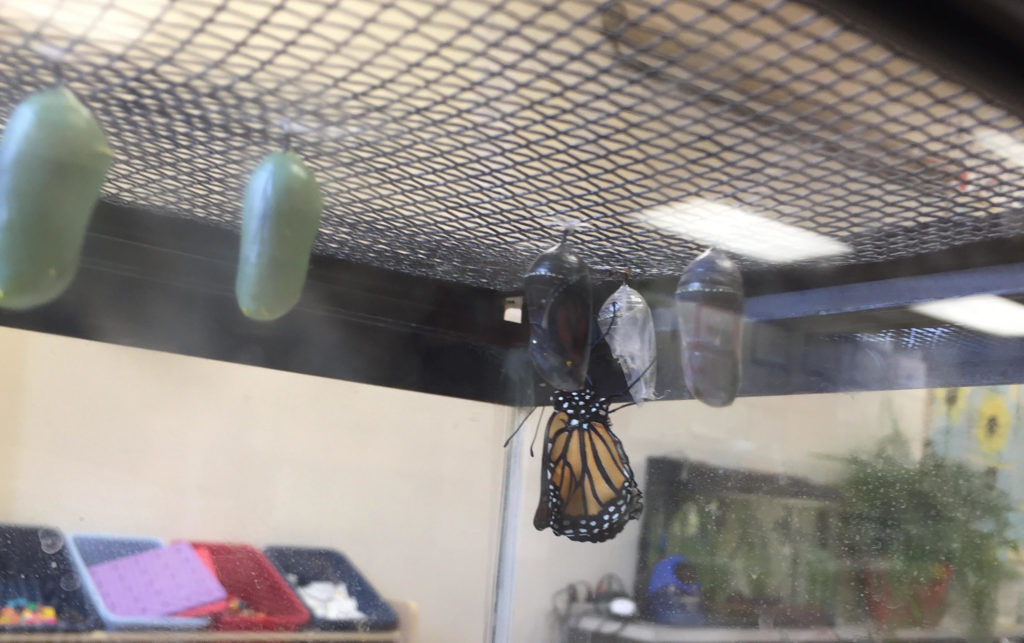
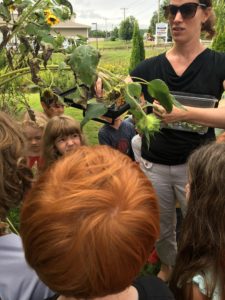 The Blues and Indigos are studying the life cycle of the monarch. They look at the four stages and observe the sequence as they see the transformation happen before our eyes. This year, they were lucky to see several caterpillars grow from the egg stage all the way through their metamorphosis into butterflies. They represented some of the stages of the life cycle with art work in the Atelier and also read many books about the life cycle of the butterfly.
The Blues and Indigos are studying the life cycle of the monarch. They look at the four stages and observe the sequence as they see the transformation happen before our eyes. This year, they were lucky to see several caterpillars grow from the egg stage all the way through their metamorphosis into butterflies. They represented some of the stages of the life cycle with art work in the Atelier and also read many books about the life cycle of the butterfly.
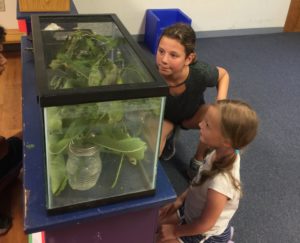
Hilltown Pollinator Garden
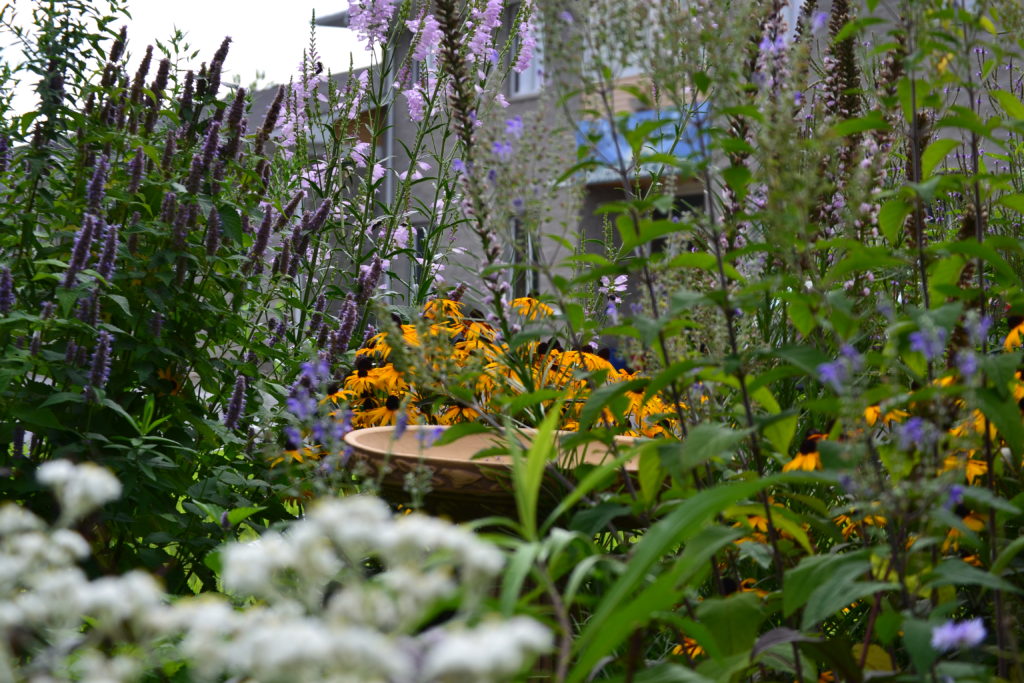
In the spring of 2017 a K-8 mixed age mini-course, with teacher, Nan Childs, began the work of creating a pollinator garden at Hilltown. The group of students learned about different kinds of pollinators and the dramatic decline that is happening to them.
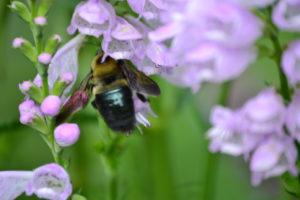 They got to work cutting out the sod and prepping the soil, then started seeds indoors for the plants they knew would attract the various pollinators. From this beginning, the Greens class, grades 2-3, completed the process, setting out the plants and maintaining the garden, which they have continued to do for the past year. Our garden is now certified as a part of the 1001 Gardens Initiative in western MA. On one day this summer we counted 11 different species of wild pollinators in the garden. Right now it is in full bloom to welcome families back to school.
They got to work cutting out the sod and prepping the soil, then started seeds indoors for the plants they knew would attract the various pollinators. From this beginning, the Greens class, grades 2-3, completed the process, setting out the plants and maintaining the garden, which they have continued to do for the past year. Our garden is now certified as a part of the 1001 Gardens Initiative in western MA. On one day this summer we counted 11 different species of wild pollinators in the garden. Right now it is in full bloom to welcome families back to school.
Compassion in Action
 The seventh grade Prisms students engaged in a Peace Jam curriculum titled “Comapssion in Action” which uses Nobel Peace Laureates as models for ways to address hurtful behavior and bullying. The Prisms learned about Alfred Nobel, the Dalai Lama, Bishop Desmond Tutu and Shirin Ebadi and the ways that they found the strength to create peaceful solutions in the face of enormous challenges. The students examined and discussed issues in our own community around acceptance, diversity and inclusion. Some of them attended the Anti Defamation League’s Youth Congress in Boston which focused on Challenging Conversations. To complete the class, the students planned and facilitated “A Day Without Hate” for the whole school. This involved leading activities in each classroom that centered on themes of inclusion and diversity, hosting an All School Assembly with the same focus and creating an “I Am Wall”. Each student and staff member in the school, after some conversation, was asked to complete the statement, “I am….” with a word or two in a way that had meaning for them. These words were written on paper “bricks” an the wall was built. It remains up now as a wonderful celebration of the ways that we at Hilltown are all unique and yet connected.
The seventh grade Prisms students engaged in a Peace Jam curriculum titled “Comapssion in Action” which uses Nobel Peace Laureates as models for ways to address hurtful behavior and bullying. The Prisms learned about Alfred Nobel, the Dalai Lama, Bishop Desmond Tutu and Shirin Ebadi and the ways that they found the strength to create peaceful solutions in the face of enormous challenges. The students examined and discussed issues in our own community around acceptance, diversity and inclusion. Some of them attended the Anti Defamation League’s Youth Congress in Boston which focused on Challenging Conversations. To complete the class, the students planned and facilitated “A Day Without Hate” for the whole school. This involved leading activities in each classroom that centered on themes of inclusion and diversity, hosting an All School Assembly with the same focus and creating an “I Am Wall”. Each student and staff member in the school, after some conversation, was asked to complete the statement, “I am….” with a word or two in a way that had meaning for them. These words were written on paper “bricks” an the wall was built. It remains up now as a wonderful celebration of the ways that we at Hilltown are all unique and yet connected.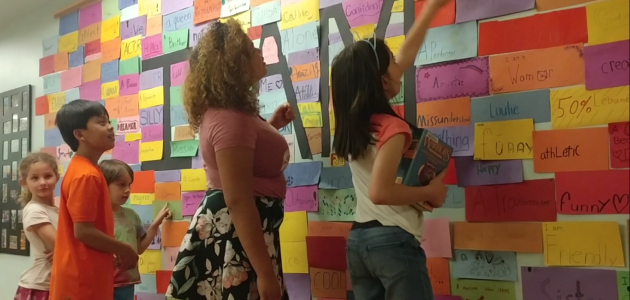
Reds & Oranges Ancient China Study
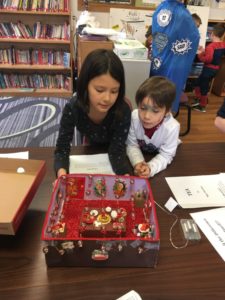 The Reds and Oranges recently completed a study on Ancient China. During the unit, the students learned about the geography, language, dynasties, philosophies and religion of Ancient China. They also imagined what it would be like to travel the Silk Road over 2,000 years ago and discovered that while silk and other goods were traded on it, the route also served as a path for cultural exchange. Their unit study also included reading Chinese folktales and learning about the importance of storytelling during ancient times.
The Reds and Oranges recently completed a study on Ancient China. During the unit, the students learned about the geography, language, dynasties, philosophies and religion of Ancient China. They also imagined what it would be like to travel the Silk Road over 2,000 years ago and discovered that while silk and other goods were traded on it, the route also served as a path for cultural exchange. Their unit study also included reading Chinese folktales and learning about the importance of storytelling during ancient times.
In conjunction with a research writing unit, each student selected a topic related to Ancient China. Using multiple sources, including books, articles and videos, students learned more about their chosen subject matter. While they researched and wrote their papers in school, the students worked on a visual to accompany their report at home. The final products were shared in an open classroom event that included families and students.
Greens & Yellows Weather Study
 The Greens and Yellows classes (2nd and 3rd grade) recently completed a study of weather.
The Greens and Yellows classes (2nd and 3rd grade) recently completed a study of weather.
Teacher, Nan Childs wrote: “Studying weather was a great segue from our unit on the water cycle where we conducted experiments around evaporation, condensation and precipitation, built mini-terrariums and watersheds and went on a riverboat field trip on the Connecticut River!
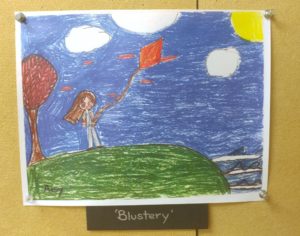 We started our weather unit by defining and comparing weather and climate. We used models and made diagrams to understand the reason for the seasons and how one’s latitude and topography on the earth helps determine weather and climate. To study how meteorologists measure weather, the students build barometers, anemometers, and weather vanes and recorded temperature readings at different locations around our school.
We started our weather unit by defining and comparing weather and climate. We used models and made diagrams to understand the reason for the seasons and how one’s latitude and topography on the earth helps determine weather and climate. To study how meteorologists measure weather, the students build barometers, anemometers, and weather vanes and recorded temperature readings at different locations around our school.
Mark Anderson, parent of Linus and Astrid, came in to share his research on airborne wind energy which is a method of harnessing renewable energy from “kites” 3,000 feet above the earth! It was fascinating and we were blown away!
In culmination, students worked in pairs researching and designing posters on extreme weather.”
Waking to the Needs of Community in the Wake of Hurricane Maria
The start of this school year was punctuated by a series of hurricanes and the substantial humanitarian need left in their paths. Hurricane Maria, which battered the islands of Dominica and Puerto Rico in mid-September, was especially salient here in the Pioneer Valley where more than half Holyoke residents are Puerto Rican. After the storm, droves of refugees began arriving to the Pioneer Valley, many to join family and friends already living here.
In Community Service Learning classes, Prisms examined the challenges facing Puerto Ricans. Students analyzed the areas of need and the factors contributing to the slow pace of recovery efforts, zeroing in on the ways they could help. Working in four classes, two Prism groups created fundraisers to send water treatment tablets and water filters through grass roots efforts on the ground in Puerto Rico. The remaining two groups focused on the refugees arriving to the Pioneer Valley. Donations of winter clothes went to Holyoke-based welcome centers for Puerto Rican refugees, while stuffed animals (bearing welcome messages written in Spanish) and school supplies went to Holyoke Public Schools for newly arrived students.
More explorations of Puerto Rican culture and interactions with displaced Puerto Ricans are planned throughout the school year.
October 2017
Prisms Colonial Tavern Roleplay
 The year is 1787. Everyone has agreed that the Articles of
The year is 1787. Everyone has agreed that the Articles of 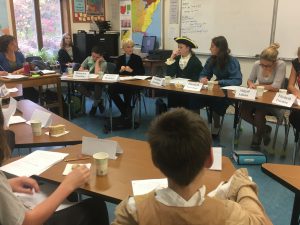 Confederation are not working well, and James Madison proposes that representatives from all states meet for a convention to revise the Articles of Confederation, and write the United States Constitution. In this interdisciplinary role play, Prisms pretended to meet in a tavern, discussing what should be included in the Constitution. Each student researched a different actual historical character and discussed the issues of the day from the perspective of their character. Characters ranged from George Washington and Benjamin Franklin to Daniel Shays (a poor farmer who led Shays’s Rebellion) to Phillis Wheatley, an African American poet, to Benjamin Banneker, an African American inventor.
Confederation are not working well, and James Madison proposes that representatives from all states meet for a convention to revise the Articles of Confederation, and write the United States Constitution. In this interdisciplinary role play, Prisms pretended to meet in a tavern, discussing what should be included in the Constitution. Each student researched a different actual historical character and discussed the issues of the day from the perspective of their character. Characters ranged from George Washington and Benjamin Franklin to Daniel Shays (a poor farmer who led Shays’s Rebellion) to Phillis Wheatley, an African American poet, to Benjamin Banneker, an African American inventor.
To prepare for the big day of the convention, students worked hard in many classes. In Humanities class, students examined primary and secondary documents to analyze issues such as federalism and anti-federalism, slavery, gender roles and balancing power between the north and the south. In Language Arts class, students used databases to research biographies of their character, and used this information to develop their characters. In Science class, students studied the fermentation process and baked sourdough bread, fermented pickles and made their own ginger ale from scratch.
On the day of the Tavern role play, students dressed as their characters, munched on pickles, chewed sourdough bread and sipped their ginger ale while passionately debating the issues they cared about.

